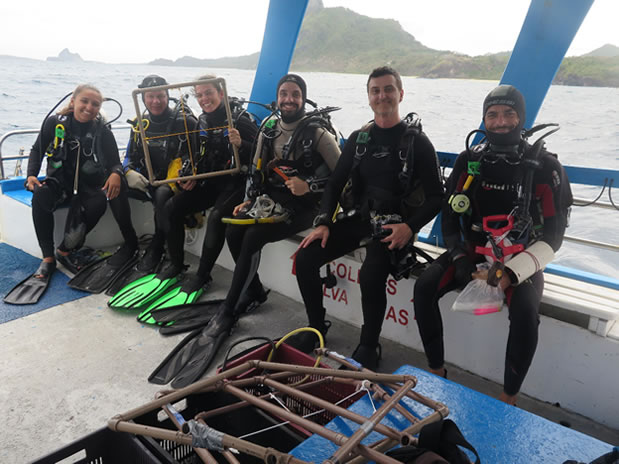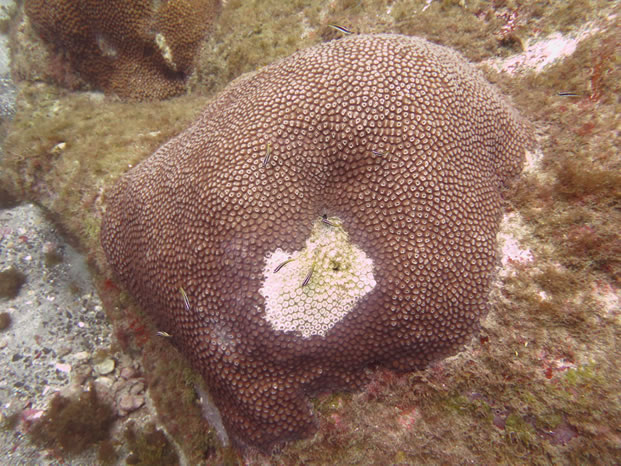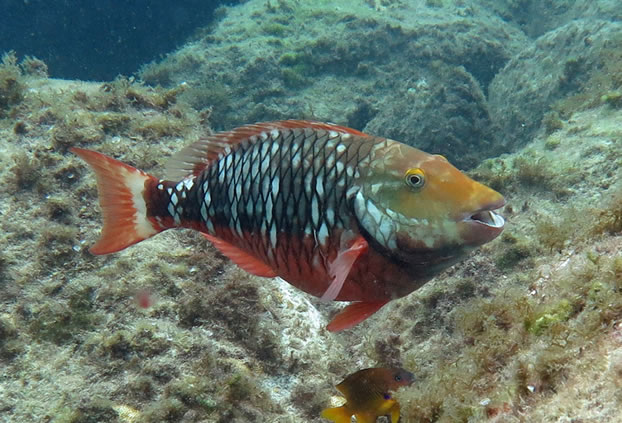|
Expeditions: Fernando de Noronha National Park
Researchers from LECAR and SISBIOTA research net go sampling in the oceanic island of Fernando de Noronha
as part of the long term monitoring program of the Brazilian oceanic islands.

PELD-ILOC and ICMBio team prepared for diving to sampling fish abundance and benthic cover at Sapata site in
Fernando de Noronha oceanic island.

Establishing new benthic transects at 22 meters deeper on Montrastea reef habitats of Sapata site.

Coral bleaching and diseases are one of the community attributes monitored at different sites.

Parrotfishes make the bulk of fish biomass in Fernando de Noronha reefs.
Annually researchers from LECAR and SISBIOTA research net (http://www.sisbiota.ufsc.br/) go sampling in the
oceanic island of Fernando de Noronha as part of the long term monitoring program of the Brazilian oceanic islands
(http://www.sisbiota.ufsc.br/peld.html). Fernando de Noronha is an archipelago of approximately 21 islands
covering an area of 19 km2, distant 345 km from the main coast. Part of the archipelago was proclaimed as national
park (no-take) since 1988. The monitoring program includes sites inside and outside the no take area, with fish
and benthic transects established from shallow (3-5m) to deep reefs (25m). Besides the changes in the benthic
community, researchers are monitoring dynamics of Mostastrea cavernosa reefs, abundant in deep habitats and
very important as complexity generators in these tropical rocky reefs. Fish communities include big parrotfishes,
surgeonfishes, barracudas, jacks and abundant planktivores, but every dive few reef sharks (Carcharhinus perezii)
can be also detected. Although part of the archipelago is protected from fishing, we still have poorly understanding
of the effects fishing outside the no-take area for the whole reef ecosystem.
|













